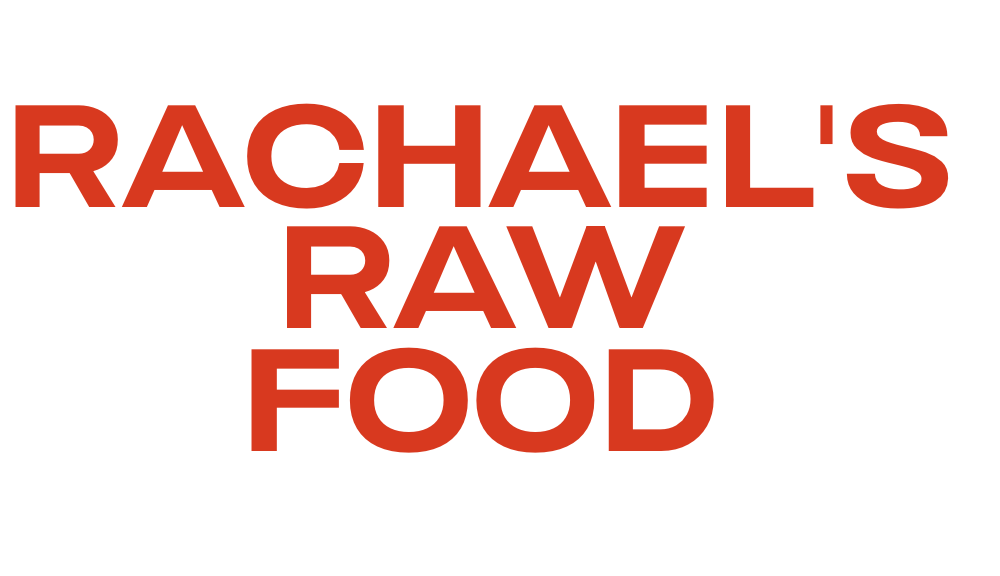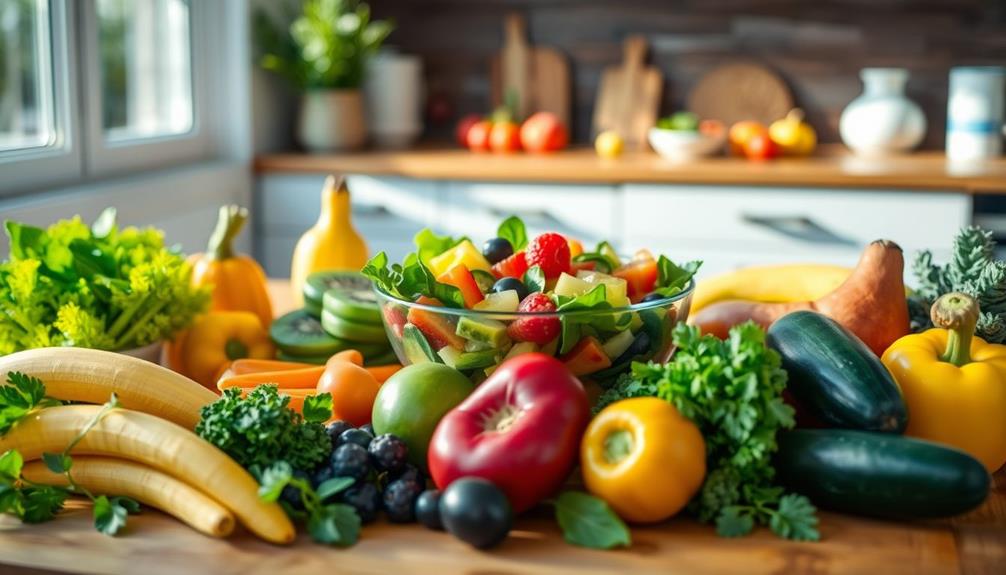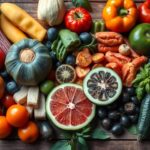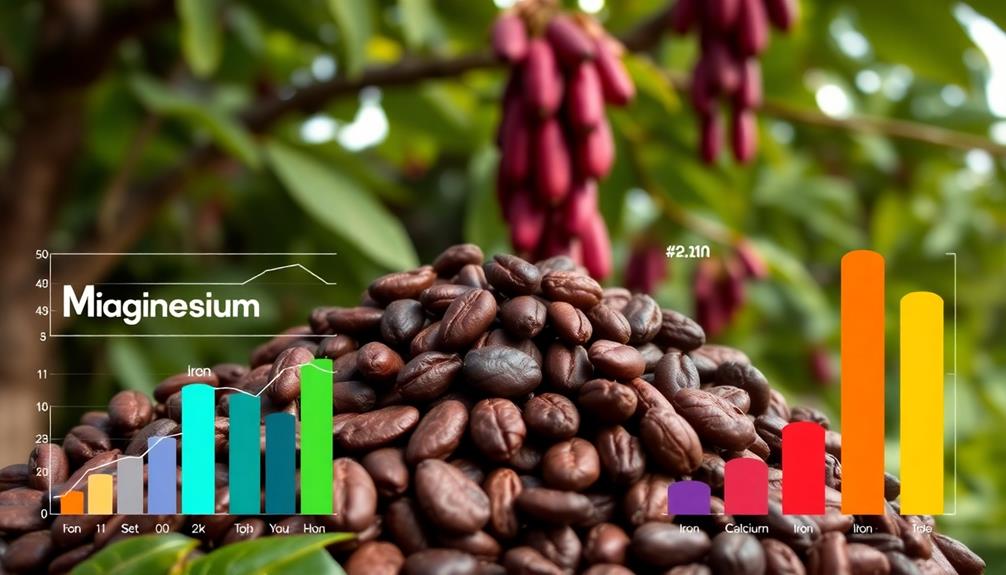Raw food can definitely be a healthy choice for you. It's loaded with nutrients, promotes better digestion, and helps lower the risk of chronic diseases. By sticking to fruits, vegetables, nuts, and seeds, you preserve essential enzymes and vitamins that cooking can destroy. However, it's vital to plan carefully to avoid nutrient deficiencies, particularly in vitamin B12, iron, and omega-3 fatty acids. You should also be mindful of food safety practices to prevent any health risks. Interested in exploring the different types of raw diets and tips for altering your diet? There's plenty more to uncover.
Key Takeaways
- Raw food diets can enhance nutrient intake, boosting overall health and providing essential vitamins and minerals.
- Increased fiber from raw foods aids digestion and promotes a feeling of fullness, supporting weight loss.
- Natural enzymes in raw foods improve digestion and nutrient absorption, contributing to better gut health.
- Proper planning is crucial to avoid nutrient deficiencies, especially in vitamin B12, iron, and omega-3 fatty acids.
- Food safety practices are essential to prevent foodborne illnesses when consuming raw foods.
Understanding the Raw Food Diet
The raw food diet, often referred to as a "living foods" approach, focuses on consuming unprocessed, whole foods that haven't been heated above 104-118°F (40-48°C). This diet mainly consists of raw fruits, vegetables, nuts, seeds, and sprouted grains. By avoiding cooking, you aim to preserve essential nutrients and enzymes that can be lost through conventional cooking methods.
Additionally, many raw foods like celery juice are known for their anti-inflammatory properties, which can further enhance health benefits. While the raw food diet is mainly a plant-based diet, some variations allow for raw animal products like eggs or fish, offering dietary flexibility.
However, it's vital to pay attention to nutritional considerations, as a strictly raw approach might lead to deficiencies in essential nutrients such as protein, vitamin B12, iron, and omega-3 fatty acids. Careful meal planning can help guarantee you meet your nutritional needs, and some might consider supplementation.
Preparation methods like soaking, sprouting, juicing, blending, and dehydrating can enhance the nutritional value of your food while keeping it raw.
Nevertheless, you should be aware of the risk of foodborne illness, which can arise from consuming uncooked animal products. Balancing your meals thoughtfully can lead to a healthier lifestyle while enjoying the raw food diet.
Health Benefits of Raw Foods

When you incorporate more raw foods into your diet, you're boosting your nutrient intake considerably.
This nutrient density can help with weight loss by keeping you full and satisfied while avoiding processed foods.
Plus, the natural enzymes in raw foods support better digestion, making it easier for your body to absorb all those vitamins and minerals.
Nutrient Density Advantages
Raw foods pack a powerful punch regarding nutrient density, offering a wealth of vitamins, minerals, and antioxidants essential for maintaining good health. When you choose raw fruits and vegetables, you're not just adding flavor; you're fueling your body with high fiber that improves digestion and promotes satiety. This can help you manage your weight more effectively by reducing overall calorie intake.
Additionally, consuming a diet rich in raw foods can complement your nutrition strategy by minimizing processed foods and added sugars, which are known to impact overall health negatively, particularly in preventing conditions like cold medications overview.
Additionally, raw foods are rich in natural enzymes, which support digestion and can lead to improved gut health. Consuming vegetables like broccoli and kale in their uncooked state allows you to access their potent anti-cancer properties, giving you an extra health boost.
A diet rich in raw foods considerably lowers your risk of chronic diseases, including heart disease and type 2 diabetes. By minimizing processed foods and added sugars, you're making a conscious choice for better health.
The nutrient density of raw foods means you're getting more bang for your buck, ensuring that every bite contributes to your well-being. Embracing more raw options could be one of the best decisions you make for your health!
Weight Loss Benefits
Embracing a raw food diet can be a game-changer for weight loss. This approach is typically low in calories, helping you create a calorie deficit while still enjoying high nutrient density from fruits and vegetables.
By integrating technology in family activities, families can explore creative projects that emphasize healthy eating habits and cooking together. With increased fiber intake, raw foods enhance digestion and promote feelings of fullness, which can reduce your overall food intake throughout the day.
Studies reveal that diets rich in raw fruits and vegetables often lead to lower body fat and reduced waist circumference compared to those high in processed foods. By incorporating more raw foods into your meals, you naturally displace higher-calorie options, fostering healthier eating patterns that contribute to weight loss over time.
Plus, the natural enzymes found in raw foods support digestion and metabolism, further aiding your weight management efforts.
As you focus on whole, unprocessed foods, you'll not only satisfy your taste buds but also help your body shed unwanted pounds.
Nutritional Risks and Considerations
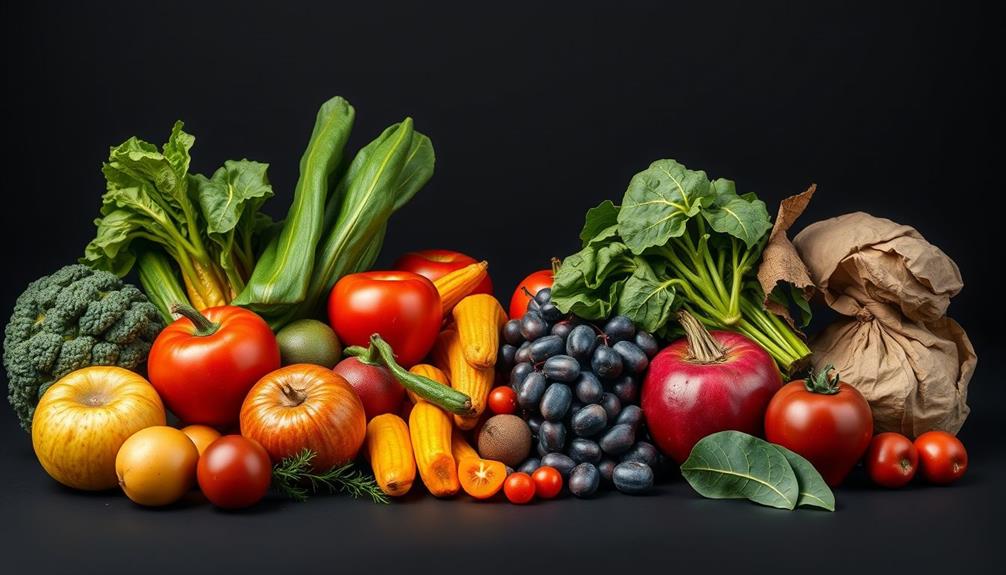
Following a strictly raw food diet can pose significant nutritional risks that you should consider. One major concern is nutrient deficiencies, particularly in vitamin B12, iron, calcium, omega-3 fatty acids, and vitamin D, which are often lacking due to the exclusion of animal products. Without proper planning, you might struggle to meet your protein requirements as plant-based sources alone may not suffice.
Additionally, certain nutrients can be better utilized by the body when foods are cooked, such as those found in tomatoes and carrots, which may affect overall health outcomes. Furthermore, using natural remedies like essential oils for health could complement your diet but shouldn't replace proper nutrition.
Cooking enhances the bioavailability of certain nutrients; for instance, lycopene in tomatoes and beta carotene in carrots become more accessible when cooked. This means you could miss out on essential nutrients that support overall health.
In addition, certain raw foods, like kidney beans and cassava, contain harmful compounds that can be toxic if consumed uncooked, emphasizing the importance of food safety.
Long-term adherence to a raw vegan diet can lead to serious health issues, including lower bone mass and increased homocysteine levels, which are linked to cardiovascular disease.
Preparing Raw Foods Safely

Preparing Raw Foods Safely
When you're preparing raw foods, food safety is vital. Make certain to wash all fruits and vegetables thoroughly and choose high-quality animal products to minimize health risks.
Proper diet and hygiene practices are essential for preventing foodborne illnesses, similar to guaranteeing that your pet's diet is balanced and nutritious, as outlined in Ultimate Hamster Care Guide.
Also, remember to store your raw ingredients properly to keep bacteria at bay and maintain freshness.
Food Safety Practices
Preparing raw foods safely is essential to guaranteeing your health and well-being. To minimize the risk of foodborne illness, follow these food safety practices. Always wash raw fruits and vegetables thoroughly under running water to eliminate dirt and potential pesticide residues. Additionally, use separate cutting boards for raw produce and raw animal products to prevent cross-contamination and the spread of harmful bacteria.
Here's a quick reference table for safe practices:
| Food Item | Safety Tip |
|---|---|
| Raw Fruits & Veggies | Wash thoroughly under running water |
| Raw Animal Products | Source from a reputable source and refrigerate |
| Raw Sprouts | Confirm they're from a trusted supplier or cook |
When it comes to raw animal products like eggs or fish, make sure they're sourced from trusted suppliers and stored at safe temperatures—below 40°F (4°C)—to inhibit bacterial growth. If you choose to consume raw sprouts, remember they can carry bacteria like Salmonella and E. coli, so consider cooking them if you're unsure. By practicing these safety measures, you can enjoy the benefits of raw foods while minimizing risks.
Proper Food Handling Techniques
Proper food handling techniques are essential for ensuring the safety of raw foods. Start by washing raw fruits and raw vegetables thoroughly under running water. This helps remove dirt, pesticides, and potential bacteria before you consume or prepare them.
To avoid cross-contamination, use separate cutting boards for raw meats and plant-based foods; harmful bacteria from meat can easily transfer to other foods. Additionally, maintaining a balanced budget while purchasing fresh produce can contribute to a healthier lifestyle, as it allows you to prioritize quality foods without overspending on your grocery bill budgeting can enhance health.
Proper storage is vital. Keep raw foods in the refrigerator to slow spoilage. Make sure fruits and vegetables are stored correctly, while raw meats should be kept at or below 40°F (4°C) to prevent bacterial growth.
Be particularly cautious with raw sprouts, as they can harbor harmful bacteria like E. coli and Salmonella. You might consider cooking them lightly or opting for pasteurized options.
Always check the expiration dates and freshness of raw dairy and eggs. It's best to choose unpasteurized products from reputable sources to minimize the risk of foodborne illness.
Types of Raw Food Diets
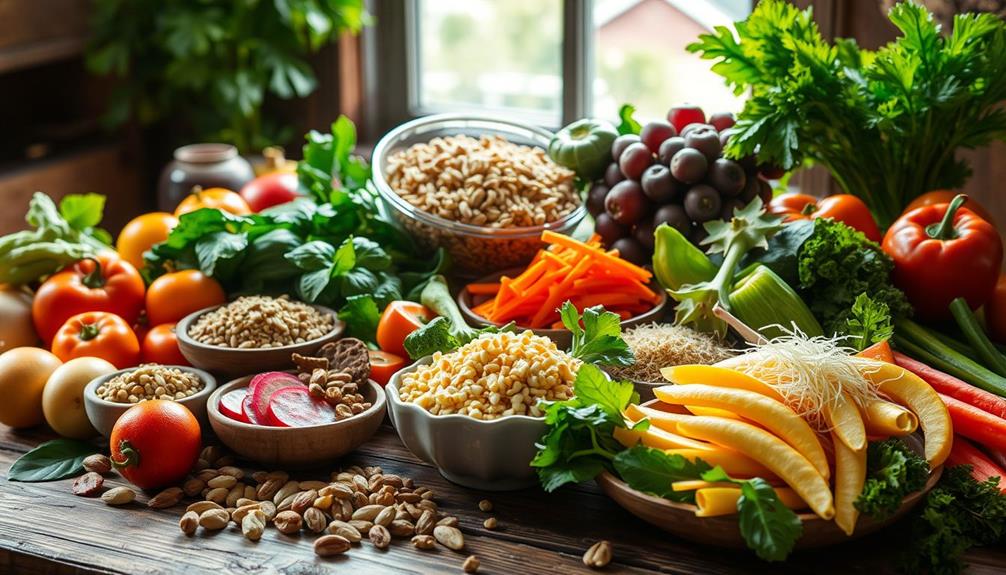
Exploring the various types of raw food diets reveals a spectrum of choices that cater to different dietary preferences and health goals.
If you're interested in a strictly plant-based approach, the Raw Vegan Diet might be for you, as it exclusively includes raw fruits, vegetables, nuts, seeds, and sprouted grains while excluding all animal products. This type of diet can promote a balanced intake of vital nutrients, contributing to overall health and wellness.
On the other hand, if you prefer a bit more flexibility, the Raw Vegetarian Diet allows for the inclusion of raw eggs and unprocessed dairy products alongside those plant-based foods.
For those open to incorporating animal products, the Raw Omnivorous Diet offers a broader range, allowing raw animal products like meat, fish, and eggs in addition to fruits, vegetables, nuts, and seeds.
It's important to note that variations in raw food diets exist; some individuals may choose to include minimal cooked foods, while others adhere strictly to raw options.
Ultimately, your choice of a raw food diet can align with your nutritional needs and personal preferences, leading to a fulfilling and health-focused eating experience.
Additionally, effective strategies for weight loss can be integrated into any raw food diet to enhance health benefits.
Tips for Transitioning to Raw Food

Making the shift to a raw food diet can feel intimidating at first, but it can be manageable with the right approach. Start gradually by incorporating more raw fruits and vegetables into your meals. Focus on the benefits of raw food, such as enhanced nutrient absorption and increased energy levels from natural enzymes, which can motivate you during this change.
Aim for a balanced approach that includes both raw and cooked foods to ease the change. Invest in essential kitchen tools like a high-quality blender, food processor, and dehydrator to facilitate meal preparation.
Focus on simple recipes initially, such as smoothies and salads. These dishes can build your confidence and help you explore the flavors of raw foods without overwhelming yourself. Pay attention to seasonal and local produce. Not only do they taste better, but they also provide ideal nutrients, enhancing the quality of your raw food diet.
Sustainability of raw food emphasizes the importance of ethical sourcing and reducing carbon footprints. Joining online communities or local groups dedicated to raw food can also be beneficial. In these spaces, you can share experiences, find support, and discover new recipes to keep your meals exciting.
Frequently Asked Questions
Is Eating Raw Food Healthy?
Eating raw food can be healthy, as it's packed with nutrients and fiber. However, you need to be mindful of potential nutrient deficiencies and food safety issues. Planning and preparation are key to reaping benefits.
What Is the Truth About the Raw Food Diet?
The truth about the raw food diet lies in its emphasis on unprocessed foods. While you might experience health benefits, be cautious of nutrient deficiencies and potential digestive issues without careful planning and food safety practices.
What Do Doctors Say About the Raw Food Diet?
Doctors warn that while a raw food diet might seem like a miracle cure, it can lead to nutrient deficiencies and risks if not properly planned. They stress balance, variety, and safe food handling for ideal health.
What Are the Negatives of the Raw Food Diet?
The raw food diet has several negatives. You might face nutrient deficiencies, digestive issues, and an increased risk of foodborne illnesses. Plus, the time-consuming meal prep can make it tough to stick with long-term.
Conclusion
In summary, embracing a raw food diet can be a path to vibrant health and energy that feels like discovering a fountain of youth! By understanding its benefits and risks, you can make informed choices that suit your lifestyle. Remember to prepare your meals safely and shift gradually to avoid overwhelming your system. With the right approach, you can enjoy the delicious and nutritious world of raw foods, transforming your eating habits into a delightful adventure!
